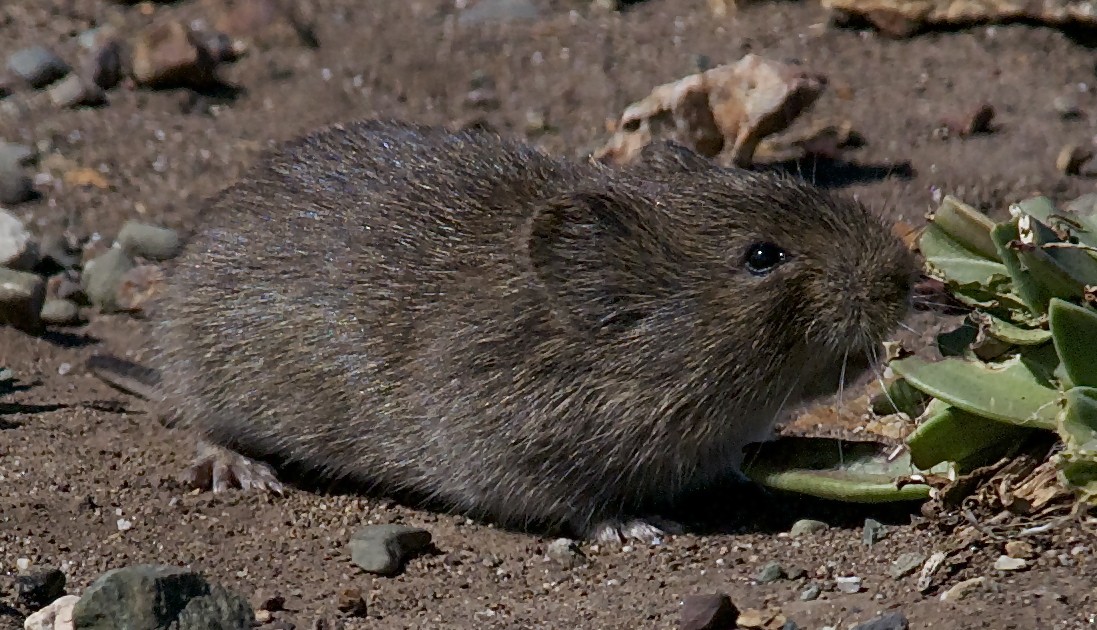Stable isotope analysis of specimens from natural history museums can link changes in the tissues of small mammals to historical climate and land use changes, according to a recent study by University of Georgia ecologist Jasmine Crumsey-Forde. The research highlights the importance of museum collections by showing how records from the past can help scientists understand how environmental change has affected ecosystems, and provide insight into potential impacts of future changes.
“The changes that we see in the climate can be reflected in the organisms that are dealing with those changes,” said Crumsey-Forde.
Stable isotope analysis has long been used to study the movement of nutrients like carbon and nitrogen through food webs. Isotopes are different forms of the same element that have different atomic weights. Researchers can measure the ratios of isotopes for a particular element found in tissues; their relative abundances can allow them to make inferences about the organism’s diet and environment. The isotope values found in tissues reflect not only what the animal assimilated, but how both the food source and the organism’s body responded to environmental stress.
Crumsey-Forde cited the difference between American and European diets as an example of how variation in stable isotopes can reveal an organism’s food sources and environment.
“A basic premise in isotope ecology is that ‘you are what you eat’,” she said. “If you were to measure the isotopic variation between those two populations, you’d find very different carbon values because Americans eat more corn-based products than Europeans.”
Crumsey-Forde and her colleagues were able to link records of historical drought conditions to severe water stress in California voles that live in California grasslands by conducting stable isotope analysis of hair samples from museum specimens.
“What is important with isotope analysis is a source of variation,” said Crumsey-Forde. “If nothing is changing then your isotopes can’t tell you anything. What we wanted to know was if in California, where we’ve seen these really dramatic changes in climate, could we pick up those changes in the tissues of animals that live in a pretty homogenous area?”
The answer was yes. The researchers found variation in carbon, nitrogen, oxygen, and sulfur isotope values depending on factors such as time, location, drought condition and land use.
The most obvious trend observed in their data was in nitrogen and oxygen isotope values in relation to water-stress, with higher values associated with increased drought severity. The researchers argue that as temperatures grow hotter, the ecosystem starts to change in two ways. Not only are organisms showing physiological responses to drought conditions, but grasslands respond as well; these changes can be reflected in the organisms that live there.
First, the plants in the grasslands become water-stressed; they lose a lot of water to evaporation, and the lighter oxygen isotope evaporates relatively more quickly, leaving behind tissues that are rich in the heavier isotope. This also happens in the heat-stressed animal that eats these plants. Under heat-stress, nitrogen cycling in grasslands changes alongside the physiological processing of nitrogen in organisms; the organism ends up losing isotopically lighter nitrogen in its urine, resulting in higher isotope values remaining in its tissues.
Ecological responses to severe climate conditions can influence the cyclical dynamics of vole populations, and may become a stronger driver of population dynamics as drought severity is projected to increase, according to Crumsey-Forde. She said that environmental changes like these have implications for ecosystems and the organisms within them, making the use of stable isotope analysis of museum collections a valuable tool for understanding the environment.
“In the midst of people not noticing the effects of climate change, we can pick up evidence that organisms are feeling those effects, almost in real-time,” she said.
The paper, “Isotope values of California vole (Microtus californicus) hair relate to historical drought and land use patterns in California, USA,” was published in Oecologia. Coauthors were Jeremy B. Searle and Jed B. Sparks, both of Cornell University.
Photo: California Vole (Microtus californicus) by Jerry Kirkhart [CC BY 2.0 (https://creativecommons.org/licenses/by/2.0)] via Wikimedia Commons.

